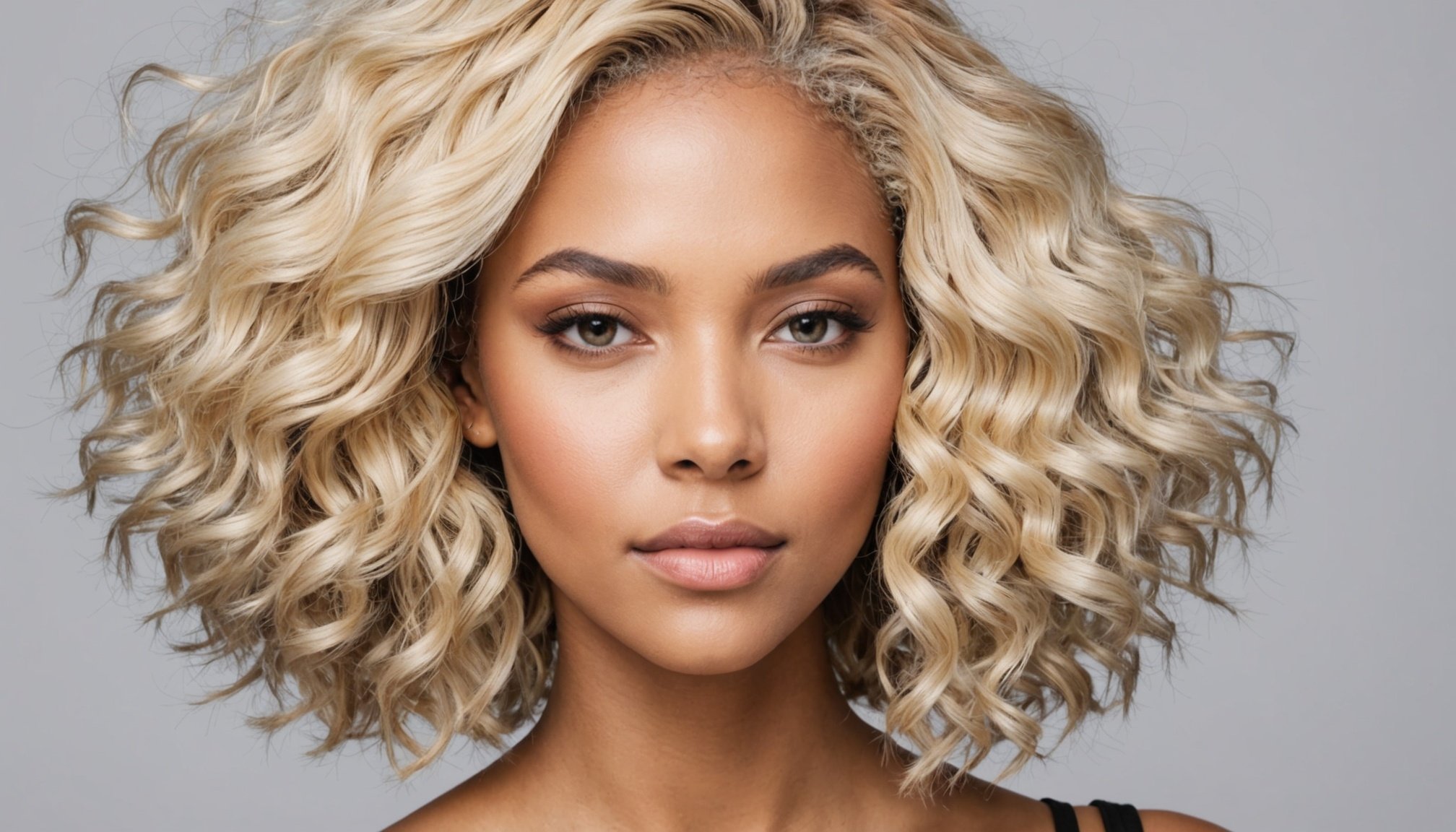Overview of Hair Bleaching
Hair bleaching involves a chemical process that strips the hair of its natural colour. During this process, the bleach penetrates the hair shaft, breaking down the pigment molecules, which can lead to changes in hair structure. This alteration can cause brittleness and dry textures if proper care is not taken post-treatment.
When considering at-home hair dyeing, it is vital to understand the distinction between professional and DIY kits. Professional bleaching often uses higher-quality, salon-grade products that are designed to minimise damage while delivering desired results. Conversely, at-home bleaching kits may be more accessible but can vary in effectiveness. Without proper caution, they can increase the risk of hair damage.
Additional reading : Top Natural Oils for Revitalizing and Hydrating Your Dry Cuticles
Understanding hair types is crucial for safe bleaching. Each type responds differently; for instance, fine hair might process quicker and incur more damage, while thicker hair may require longer processing times to achieve the same results. Knowing your hair type allows for tailored bleaching methods, potentially preserving hair health.
It is advisable to conduct thorough research or consult a professional before bleaching, whether professionally or at home, to ensure your hair remains healthy and vibrant.
In the same genre : Ultimate Guide to Caring for and Styling Afro-Textured Hair During Humid Conditions
Essential Safety Precautions
When considering hair bleaching, taking the necessary safety measures is crucial to avoid potential damage and adverse reactions. One of the first steps you should take is performing a patch test. This involves applying a small amount of the bleaching product to a discreet area of skin to check for any allergic reactions. This will help you identify any allergies you may have and prevent larger scale issues in the process.
To ensure safety during application, it is recommended to use protective gear such as gloves and an old shirt that you don’t mind staining. These items will guard your skin and clothes against the bleaching agents. Investing in a good quality, soft-bristle application brush can also aid in even application and reduce the risk of leaving the bleach on longer than necessary.
In addition to protective gear, there are several tips for minimizing hair damage. You should always ensure your hair is in good condition before starting; consider using a deep conditioning treatment beforehand. During the process, closely monitor the time, as leaving the bleach on longer than instructed can over-process the hair, leading to breakage or extensive damage. By adhering to these guidelines, you can enjoy a safer bleaching experience.
Step-by-Step Guide to Bleaching Hair at Home
Bleaching your hair at home can be a rewarding and satisfying experience when done correctly. Let’s explore the hair bleaching technique through this comprehensive guide that will help you achieve salon-quality results while ensuring the health of your hair.
Preparation Steps
Before you embark on your DIY hair bleaching journey, it’s crucial to prepare your hair and surroundings. Start by gathering all necessary tools and products, such as gloves, a mixing bowl, applicator brush, and the bleaching kit. Ensure your hair is clean and residue-free. Applying a pre-treatment or coconut oil can protect your hair from potential damage. Clip your hair into sections for easier application, ensuring thorough coverage.
Application Process
Begin your bleaching process by mixing the components as per the bleaching instructions provided with your kit. Apply the mixture starting from the ends of your hair, working up towards the roots. It’s essential to coat each section evenly, using an applicator brush for precision. Remember to wear gloves throughout the process.
Timing and Monitoring
Proper timing is pivotal in achieving the desired shade. Check your hair frequently to monitor the lightening process, as leaving the bleach on too long can damage your hair. Once you’ve reached your target lightness, rinse thoroughly with cool water, followed by a deep conditioning treatment. This maintains moisture and shine post-bleach.
Recommended Products for Home Bleaching
Navigating the world of hair care products for bleaching can be challenging. To simplify the process, we’ve curated a list of the best hair bleach products along with essential features and user reviews.
Top-Rated Bleaching Kits
- Schwarzkopf BlondMe Premium Lift 9
- Known for its ability to lift up to nine levels, this kit is perfect for achieving a platinum blonde look.
- Users appreciate its minimal damage approach, thanks to its integrated bonding technology.
- Manic Panic Flash Lightning
- Ideal for at-home enthusiasts, it features a pre-measured powder and cream developer.
- Customers highlight its effectiveness for vivid dye preps.
- L’Oreal Paris Colorista Bleach
- Perfect for those seeking subtle highlights or complete bleaching.
- Reviewers note its easy application and even colour results.
Essential Aftercare Products
After using the best hair bleach, it’s essential to maintain hair health. Consider products like nourishing oils, hydrating masks, and sulphate-free shampoos to restore moisture and prevent breakage. Regular conditioning treatments can also significantly aid in maintaining the shine and vitality of bleached hair.
User Experiences
Users’ feedback helps discern the real-world effectiveness of these bleaching kits. Most reports praise the ease of use and durability of results, but stress the necessity of an effective post-bleaching care regimen for optimal results.
Aftercare Tips for Healthy Hair
After bleaching, maintaining vibrant and healthy hair can be challenging. It’s essential to employ effective hair care post-bleach to keep your locks looking their best. One actionable step is incorporating moisturizing and conditioning treatments into your routine. Choose products rich in natural oils and proteins to reinforce the hair shaft and prevent breakage. Ingredients such as argan oil, shea butter, and keratin are excellent options.
To prevent hair damage, consider how you style it. Bleached hair is more vulnerable to heat. Lower the temperature on styling tools and always use a heat protectant spray. Air-drying your hair or using a microfibre towel can also reduce damage. Additionally, opt for gentle hairstyles that do not stress your hair.
Consistent hydration is another cornerstone of hair restoration. Use leave-in conditioners or hair masks weekly to maintain moisture and nourish bleached hair. Moreover, trim your hair regularly to remove split ends and promote healthier growth.
Colour-safe shampoos and conditioners can protect your colour while strengthening your hair. Avoiding harsh sulphates and parabens also contributes to long-term hair health, ensuring your bleached hair remains radiant and resilient.
Possible Side Effects of Hair Bleaching
Hair bleaching offers a quick transformation but also brings bleaching risks. It’s important to be aware of potential side effects. Common reactions include dryness, increased hair damage, and brittle strands. This occurs due to the harsh chemicals that strip the hair of its natural colour and oils.
Signs of hair damage are crucial to identify. Look for breakage, split ends, and a rubbery texture when wet. Post-bleach, hair may appear dull and lose its shine. The scalp might experience irritation, itching, or even burning sensations. These signs indicate that your hair needs additional care and potentially professional intervention.
Knowing when to consult a professional is key to avoiding further damage. If you observe excessive hair loss, persistent scalp irritation, or unsatisfactory results, it’s advisable to seek expert guidance. A professional can assess the extent of the damage and recommend appropriate treatments, potentially mitigating irreversible harm.
By understanding the risks and being vigilant for signs of damage, you can ensure your hair stays healthy and strong, even after bleaching. Always weigh the pros and cons and prioritise hair health in any treatment.
Expert Advice and User Testimonials
When it comes to hair bleaching advice, professional insights are invaluable. Experts recommend performing a strand test before fully committing, which helps predict how your hair will react to the bleach. Maintaining optimal hair health both before and after bleaching is crucial. This involves using deep-conditioning treatments to bolster hair elasticity and minimize damage.
User experiences highlight a range of outcomes in the bleaching journey. People often share that following expert tips significantly enhances their success rates. For instance, keeping track of the bleaching time is crucial; leaving bleach on too long can cause unnecessary damage. Many users have reported more vibrant results by incorporating expert tips like using foil wrapping to retain warmth and improve lightening.
Yet, it’s not uncommon to encounter pitfalls. One frequent mistake is skipping the moisture restoration step post-bleaching. Users who neglected conditioning treatments reported increased breakage and dryness. Additionally, inconsistent application can lead to patchy results, a concern echoed by numerous testimonials.
In summary, both expert advice and user testimonials underscore the importance of preparation, execution, and aftercare in achieving successful hair bleaching results. Avoiding common mistakes can pave the way for a more satisfying experience.
Frequently Asked Questions about At-Home Hair Bleaching
When embarking on a journey with at-home hair bleaching, it’s common to face several doubts and concerns. Our hair bleaching FAQ aims to provide clarity and expert insights.
What should I do if my hair turns yellow or brassy after bleaching?
This is a frequent issue in at-home bleaching. To counteract yellow or brassy tones, use a purple shampoo or toner. These products correct unwanted warmth by neutralising the yellowness, returning your hair to a cooler shade.
Can I bleach my hair if it’s already damaged?
It’s advisable to proceed with caution. Prior to bleaching, improve hair health with deep conditioning treatments and nourishing masks. Expert answers stress the importance of preparedness to minimise further damage.
How often can I bleach my hair at home?
Ideally, wait at least six weeks before another bleaching session. Bleaching too frequently can severely damage hair, leading to breakage.
Are there any myths about at-home hair bleaching to be aware of?
Myth-busting: Bleaching doesn’t work the same for everyone. Factors like natural hair colour, texture, and previous treatments can affect results. Following expert answers and guidance aids in achieving desired outcomes.
Understanding these common concerns and solutions can empower your bleaching experience, fostering healthier hair transformations.











